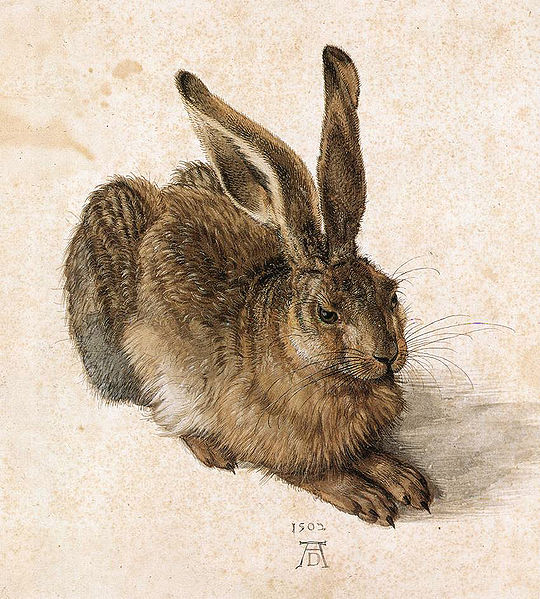Artistic Roles
This article gives an overview of the social roles that art can perform.
Description
A traditional role of visual art is to describe ourselves and our surroundings. Some of the earliest artworks discovered are drawings and paintings of humans and wild animals on walls deep within prehistoric caves. One particular image is a handprint: a universal symbol of human communication.
Portraits
Portraits, landscapes, and still life are common examples of description. Portraits capture the accuracy of physical characteristics but the very best also transfer a sense of an individual’s unique personality. For thousands of years this role was reserved for images of those in positions of power, influence and authority. The portrait not only signifies who they are, but also solidifies class structure by presenting only the highest-ranking members of a society.
Notice how portrait is utilized in the images below. The portrait Bust of Egyptian Queen Nefertiti, dated to around 1300 BCE, exemplifies beauty and royalty. The full-length Imperial Portrait of Chinese Emperor Xianfeng not only shows realism in the likeness of the emperor, it exalts in the patterns and colors of his robe and the throne behind him.

Bust of Nefertiti, painted sandstone, Egyptian, c. 1370 BCE, Neues Museum, Berlin
.png)
Imperial Portrait of Emperor Xianfeng, China, c. 1855. Palace Museum, Bejing
Landscapes
Landscapes, by themselves, give us detailed information about our natural and human made surroundings; things like location, architecture, time of day, year or season plus other physical information such as geological elements and the plants and animals within a particular region.
Realism
In many Western cultures, the more realistic the rendering of a scene the closer to our idea of the ‘truth’ it becomes. In the 15th century, the German artist Albrecht Dürer created vivid works that show a keen sense of observation. His Young Hare from 1495 is uncanny in its realism and sense of animation.

Albrecht Dürer, Young Hare, c. 1495, gouache and watercolor on paper
Scientific Illustration
Out of this striving for accuracy and documentation developed the art of scientific illustration, an important part of scientific communication before the advent of photography. Scientific illustrators concentrate on accuracy and utility rather than aesthetics and document many different types of scientific phenomenon.

Banksia coccinea, Illustrationes Florae Novae Hollandiae, plate 3
Enhancing our world
Art plays a role in our everyday lives. Art's role in enhancing our lives is more utilitarian than others. It includes textiles and product design, decorative embellishments to the items we use everyday and all the aesthetic considerations that create a more comfortable, expressive environment. Can you point out five works of art, in the utilitarian sense, in close proximity to you right now?
Source: Christopher Gildow, Washington State Board for Community and Technical Colleges, http://opencourselibrary.org/art-100-art-appreciation/ This work is licensed under a Creative Commons Attribution 3.0 License.
This work is licensed under a Creative Commons Attribution 3.0 License.